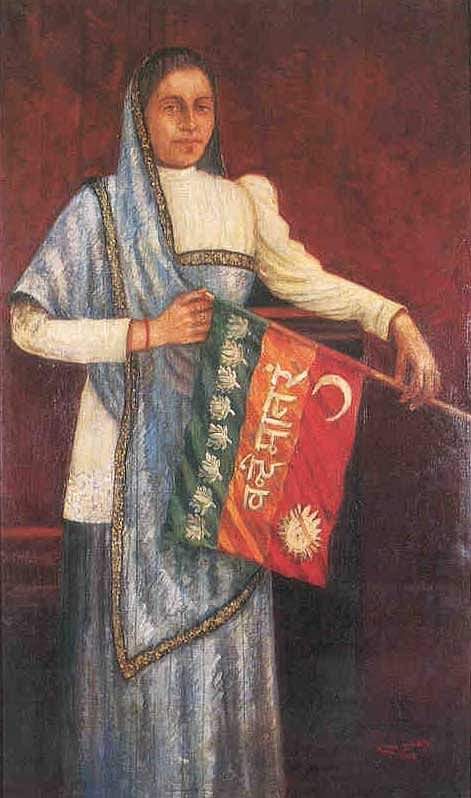
Did you know?
Bhikaji Cama was the first person to hoist the Indian flag
on the foreign soil in Stuttgart, Germany.
People may have heard her name on roads and buildings, but very few know who she was and what she did for India.
#IndependenceDay
Bhikaji Cama was the first person to hoist the Indian flag
on the foreign soil in Stuttgart, Germany.
People may have heard her name on roads and buildings, but very few know who she was and what she did for India.
#IndependenceDay

Bhikaji Cama was born on September 24 1861 into a large, affluent Parsi family. Her father, Sorabji Framji Patel, was a famous merchant who was at the the forefront of business, education, and philanthropy in the city of Bombay.
Influenced by an environment in which the Indian nationalist movement was taking root, Bhikaji was drawn toward political issues from a very early age. She had a flair for languages and soon became proficient in arguing her country’s cause in different circles.
Bhikaji was a nationalist at heart and believed that the Britishers had ruthlessly exploited India for their own profit. In 1896, bubonic plague broke out in the Bombay Presidency and Bhikaji immediately volunteered to help the team working to save plague victims.
Banned in India and Britain for her nationalist activities, Bhikaji managed to send the weekly magazines to Indian revolutionaries from Paris. She also helped the revolutionaries in every way possible, whether with money, material or ideas.
The British Government were unable to check her, despite their best efforts.
On August 22, 1907, Madam Bhikaji Cama became the first person to hoist Indian flag on foreign soil in Stuttgart in Germany.
On August 22, 1907, Madam Bhikaji Cama became the first person to hoist Indian flag on foreign soil in Stuttgart in Germany.
Appealing for human rights, equality and for autonomy from Great Britain, she described the devastating effects of a famine that had struck the Indian subcontinent.
The flag she unfurled was co-designed by Cama and Shyamji Krishna Varma, and would later serve as one of
The flag she unfurled was co-designed by Cama and Shyamji Krishna Varma, and would later serve as one of
the templates from which the current national flag of India was created. In the flag, the top green stripe had eight blooming lotuses representing pre-independence India’s eight provinces. ‘Vande Mataram‘ was written across the central saffron stripe in Hindi.
On the bottom red stripe, a half moon was on the right and the rising sun on the left, indicating the Hindu and Muslim faith.
When First World War broke out in 1914, Bhikaji took an anti-British stand.
When First World War broke out in 1914, Bhikaji took an anti-British stand.
She visited the army camp at Marseilles and asked the Indian forces there, “Are you going to fight for the people who have chained your motherland?”
In November 1935, 74 year old Bhikaji finally returned to Mumbai, but did not live for long.
In November 1935, 74 year old Bhikaji finally returned to Mumbai, but did not live for long.
Having fulfilled her desire of seeing her motherland once again, she breathed her last nine months later on August 13 1936. She had bequeathed most of her personal assets to the Avabai Petit Orphanage for girls. The nation had lost a fearless
Cama was not only a part of India's independence movement but also an iconoclast who stood for gender equality during the late 19th and early 20th centuries. 

• • •
Missing some Tweet in this thread? You can try to
force a refresh









